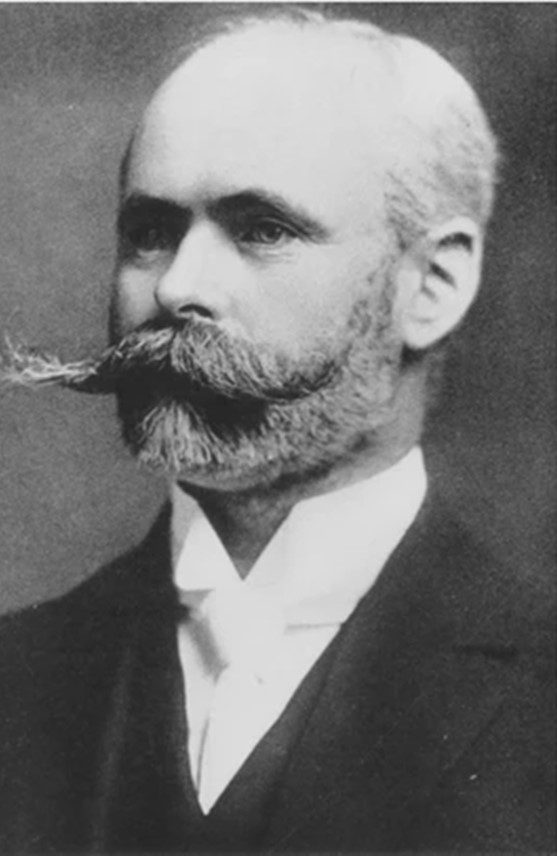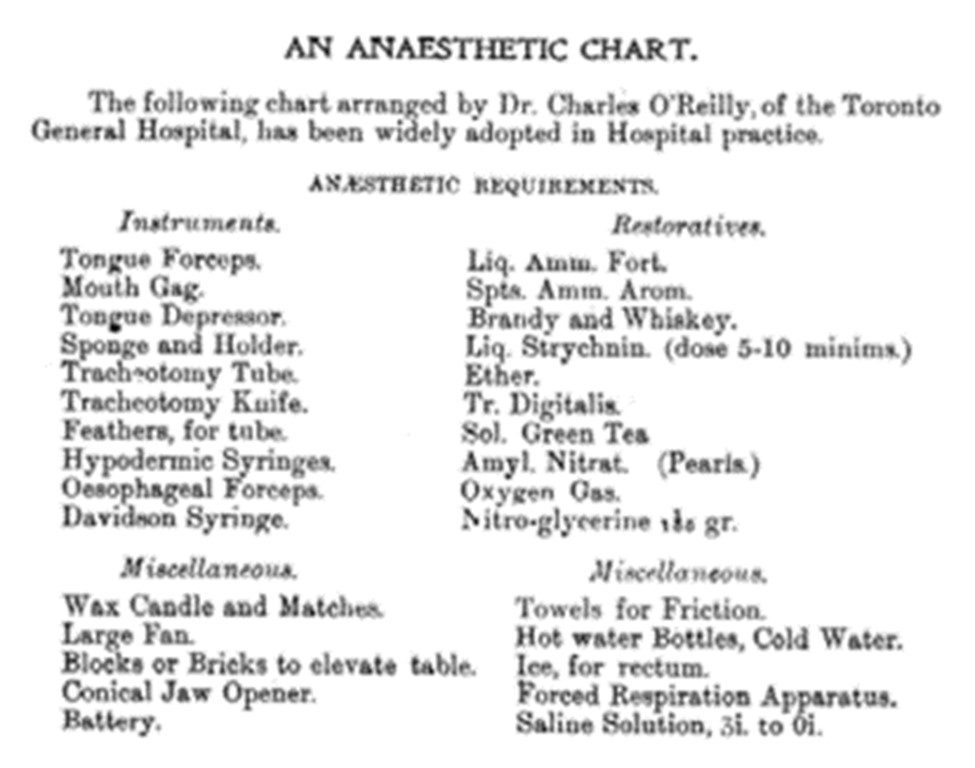Kush Patel
Ajax, Canada
 |
| Dr. William Webster. Photo by the Canadian Anesthesiologists’ Society (CAS), 2004. Archival Resources, Preserving the Heritage of Canadian Anesthesiology, p. 5. Permission obtained by the CAS Archives and Artifacts Committee. |
Until the early twentieth century, anesthetics were a black box, and even though ether and chloroform were commonly used, their physiological effects were little known and felt nothing short of wizardry.1 No wonder Dr. John Warren cried “this is no humbug!” on seeing a patient open his eyes for the first time after he excised a neck tumor.2 Since there was not much science to administering an anesthetic, “almost anyone who could hold a mask and pour on some drug was allowed to.”1 Of course, this is far from the truth today. So, when did anesthesiology enter the era of academic medicine?
In Canada, it began with Dr. William Webster of Winnipeg. He graduated from Manitoba Medical College in 1895 and went into general practice.3 Inspired by Dr. William Osler’s “brain dusting” excursions,4 he would take every few years a break from his routine to travel and study specific aspects of medicine he found fascinating. In 1897, he delved into pathology for a year at Owen’s College in England. Again in 1910, he spent six months in the pathology laboratories at McGill University. His studies sparked an interest in anesthesiology, and he started spending more and more time administering anesthetics in the operating room. Accordingly, he was appointed honorary anesthetist at the Winnipeg General Hospital in 1905.5 Two years later, he decided to devote all his time to anesthesia, which made him the first full-time anesthesiologist in Western Canada. With many more firsts as a clinician, researcher, and educator, Dr. Webster would become the impetus for modern academic anesthesiology in Canada.
If you asked Dr. Webster about his rationale for anesthetic dosing, he “could recall and point out where so and so, years previously, had mentioned said variation, citing chapter and verse.”4 His mastery of historical works of the likes of Dr. Crawford Long, Dr. William Morton, and Dr. John Snow was unparalleled. His surgical colleagues saw that his knowledge translated into better patient care and respected him. During his tenure, the volume of surgeries at the General increased from 1,000 in 1900 to over 8,000 in 1934.6 Complicated contemporary operations such as craniotomy were performed for the first time in 1929. He embraced the challenges of a lack of intravenous therapy through oral hydration and of tracheal intubation through insufflation equipment. He was transforming the clinical landscape of anesthesia and rightly was named the chief of anesthesia in 1919.7
 |
| The publication in 1901 of anaesthetic requirements. Photo by CAS, 2004. Archival Resources, Preserving the Heritage of Canadian Anesthesiology, p. 4. Permission obtained by the CAS Archives and Artifacts Committee. |
Curiosity is commonly an inherent trait among anesthesiologists. Getting to the “why” was of utmost importance to Dr. Webster and drove his research in anesthetics to pharmacology. His prominent publications were on ethyl chloride induction in 1,800 patients and on the physiological effects of 7,000 anesthetics.6 His research and background knowledge helped his close friend Dr. Elmer McKesson help invent the first anesthetic machine.7 In 1922, he was the first to advocate for a research journal to present Canadian research on an international stage, and his vision manifested three decades later with The Canadian Anaesthetists’ Society Journal (CASJ).1 Dr. Webster’s commitment to research was instrumental in legitimizing anesthesiology as a specialty, and the CASJ would provide a platform for all future research work.
Teaching was a passion of Dr. Webster long before he was a physician. He was a rural schoolteacher in Snowflake, Manitoba, and this is how he saved up funds to attend medical college.4 Not surprisingly, he was appointed lecturer in anesthesia in 1905, which was the first academic appointment in Canada.1 Students at the time received little to no exposure to anesthesiology. Didactic lectures were one thing, but he believed that practical training would be of greatest value. Therefore he instituted the earliest form of an anesthesiology rotation—“The fourth year students came in groups of three for two weeks from eight a.m. to twelve noon. During this period each student gave at least five anesthetics under supervision.”4 In 1924, he published the first Canadian textbook on anesthesia called The Science and Art of Anesthesia.5 It was the only official Canadian teaching textbook until the end of the twentieth century. As an enthusiastic educator, Dr. Webster laid the foundation for an academic curriculum and inspired learners who grew the specialty of anesthesiology.
Modern academic anesthesiology is a three-legged stool of patient care, research, and teaching in the context of safe anesthesia supported by technology.8 It would be simplistic and inaccurate to attribute this advancement to one person as it “arises from the climate of opinion and knowledge prevalent at that time.”9 Notable Canadian pioneers include Dr. Edward Worthington, Dr. Horace Nelson, and Dr. Wesley Bourne. However, if one were to pick the first modern-day Canadian academic anesthesiologist, it would be Dr. Webster. A close second would be his good friend Dr. Samuel Johnston, who did similar work in Toronto but a couple years later.1 Anesthesia consults are now commonplace in general surgery for pre-operative assessment, in obstetrics and gynecology for spinal anesthesia, in family medicine for chronic pain, in psychiatry for electroconvulsive therapy, and in internal medicine for acute pain. The current scope and relevancy of anesthesiology is a product of academic medicine, based in great part on the saying of Confucius to “study the past if you would define the future.”
References
- “Preserving the Heritage of Canadian Anesthesiology.” Canadian Anesthesiologist’ Society, 2004. https://www.cas.ca/CASAssets/Documents/History/74_Preserving-the-Heritage.pdf.
- Aptowicz, Cristin O’Keefe. “The Dawn of Modern Anesthesia.” The Atlantic. Atlantic Media Company, September 4, 2014. https://www.theatlantic.com/health/archive/2014/09/dr-mutters-marvels/378688/.
- Goldsborough, Gordon. “Memorable Manitobans: William Webster (1866-1934).” Manitoba Historical Society, September 21, 2014. http://www.mhs.mb.ca/docs/people/webster_w.shtml.
- Aikenhead, DC. “William Webster, M.D., Anesthetist.” Anesthesia and Analgesia 16, no. 6 (1937): 312–17.
- Wade, John. “William Webster: Author of Canada’s First Anesthesia Textbook.” Canadian Journal of Anesthesia/Journal canadien d’anesthésie 65, no. 10 (2018): 1154–55. https://doi.org/10.1007/s12630-018-1146-7.
- Wolkenstein, Christopher F. “Dr. William Webster: Pioneer Manitoba Anaesthetist.” Canadian Journal of Anaesthesia 37, no. 3 (1990): 348–48. https://doi.org/10.1007/bf03005588.
- Minuck, M. “Pioneers of Canadian Anaesthesia Dr. William Webster.” Canadian Anaesthetists’ Society Journal 19, no. 3 (1972): 322–26. https://doi.org/10.1007/bf03028298.
- Legato, Marianne J. “Balancing the Three-Legged Stool: Which Faculty Are Most Important in Our Academic Medical Centers?” Gender Medicine 3, no. 2 (2006): 71–72. https://doi.org/10.1016/s1550-8579(06)80196-8.
- Chaturvedi, Ravindra, and RL Gogna. “Ether Day: An Intriguing History.” Medical Journal Armed Forces India 67, no. 4 (2011): 306–8. https://doi.org/10.1016/s0377-1237(11)60098-1.
KUSH PATEL is a fourth-year medical student at the University of Ottawa. He graduated from the University of Guelph in 2018 with an Honours Bachelor of Science Degree. He has a keen interest in the history of medicine and volunteers with the Archives and Artifacts Committee of the Canadian Anesthesiologists’ Society.
Submitted for the 2022–23 Medical Student Essay Contest

Leave a Reply